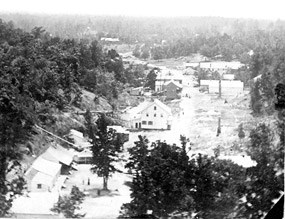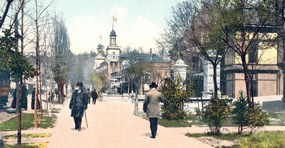
The Early Years Early Bathhouses 
Seeking Health and Luxury By 1921, the Hot Springs Reservation had become a popular destination for vacationers and health remedy seekers. The new National Park Service's first director, Stephen Mather, convinced Congress to declare the reservation the 18th national park. Monumental bathhouses built along Bathhouse Row about that time catered to crowds of health-seekers. These new establishments, full of the latest equipment, pampered the bather in artful surroundings. The most expensive had marble and tile decorated walls, floors, and partitions. Some rooms sported polished brass, murals, fountains, statues, and even stained glass. Gymnasiums and beauty shops helped cure-seekers in their efforts to feel and look better. The Army/Navy Hospital, now the Hot Springs Rehabilitation Center, is located just above the south end of Bathhouse Row. Their use of the hot spring water for treatments contributed to a boost in the bathing business during and immediately after World War II. By the 1950s, changes in the field of medicine led to a rapid decline in the use of water therapies. People also started taking driving vacations rather than traveling by train to a single destination. One by one as business declined, the bathhouses began to close. The Buckstaff has been the only traditional bathhouse operating on Bathhouse Row since 1985. In the summer of 2008, the newly leased, updated Quapaw Bathhouse is reopening as a modern day spa. |
Last updated: April 10, 2015
